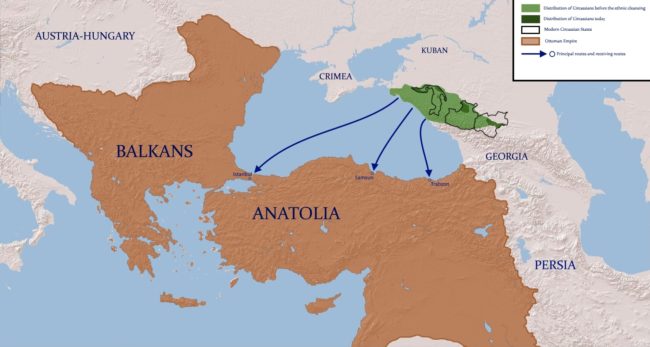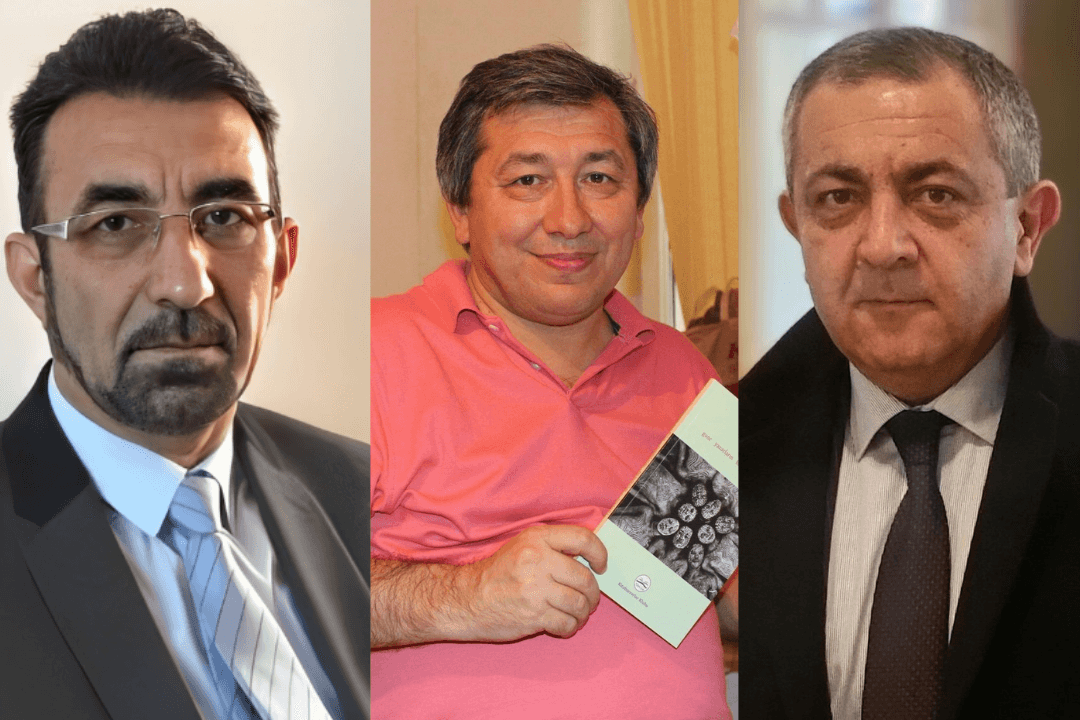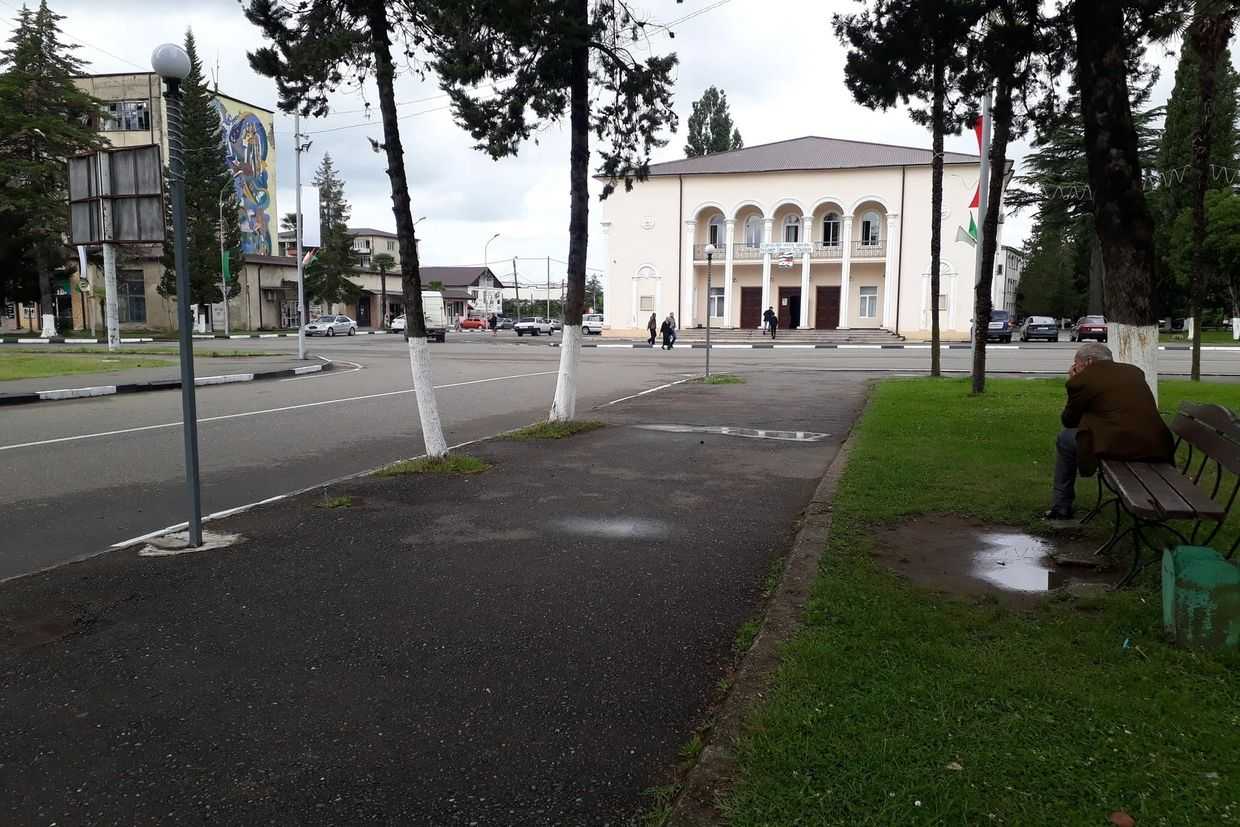

 Young people from Kabardino-Balkaria have increasingly been leaving in droves. They move in search of better salaries and living conditions. In their place, more and more foreign labour migrants are arriving, but not all of them are welcomed with open arms.
Young people from Kabardino-Balkaria have increasingly been leaving in droves. They move in search of better salaries and living conditions. In their place, more and more foreign labour migrants are arriving, but not all of them are welcomed with open arms.
Labour migration in Kabardino-Balkaria has two stable trends: an outflow of indigenous people of reproductive age, to Stavropol and Krasnodar Krai, Moscow, Saint Petersburg, Europe, and Canada, and the growth of the Asian community, mainly Uzbeks.
It is difficult to obtain official data on labour migration. Officials from the Main Directorate for Migration Affairs claim that a written request from an organisation or institution based in Russia is needed, and so access to the information was denied to OC Media. Officials at the Federal Service for Labour and Employment gave the same answer. Still, migration tendencies in the Republic are apparent. The number of Uzbek citizens coming to Kabardino-Balkaria keeps growing, while local young people keep leaving.
Labour migration from Central Asian countries is almost exclusively seasonal. Citizens of Uzbekistan and Tajikistan arrive mainly on the eve of the summer construction season and go home around New Year. They will return again the next year, in slightly larger numbers.
When a prorab calls

Twenty-nine-year-old Maskhut Dosov first came to work in Kabardino-Balkaria in 2008. He arrived in spring, when he and many other Central Asian migrants rushed in large numbers to work in Russia. I met Maskhut by chance, while he was renovating a friend’s flat. He and his two friends came to Nalchik by train: through Kazakhstan, Astrakhan, Elista, and Stavropol.
‘One person from Nalchik called’, Maskhut begins his story, ‘And said there was a job, and young men were needed. The salary was average, but still decent, enough to send some home. I married shortly before I received this offer, we had a daughter. In short, we needed money. That’s how I came.’
The man who called was a prorab — a foreman, the head of a work crew. Prorab usually come from Kabardino-Balkaria’s Uzbek community (or are occasionally Tajik) who managed to establish small businesses back in the liberal 1990s. They look for job opportunities, or sometimes the job opportunities look for them, and then make open calls for a couple of workers or even a whole crew. Maskhut still hasn’t managed to establish himself in Nalchik, although he has a good chance to.
‘For the first six months I worked at a brick factory in the village of Shalushka, fifteen minutes from Nalchik. In 2008, we received ₽15,000 ($260) for work, that is, ₽500 ($8) per day. With this money, I could buy three kilos of good beef. We lived at the factory, but we had good living conditions. Not as bad as many of our compatriots endure in Moscow or Saint Petersburg’, Maskhut says.
After the brick factory, Maskhut worked on private construction sites and flat renovations. Three years ago, he began to organise his own work crews from his compatriots. Once, he tecieved a well-paid order to build a house in the town of Nartan. However, after the work was completed, the owner refused to pay half of the agreed price, complaining about little and irrelevant things. Maskhut, who had hired ten workers for the job, had to pay their wages from his own pocket. There was nothing left from his share of ₽400,000 ($7,000).
‘My local friends would tell me, “Let’s go and take your money from this scoundrel”, but that would be a crime, because I never signed any contract with him. If I commit a crime, in the best case they will deport me without the right to return, and in the worst case, they’ll send me to prison. Who would take care of my family then? Let it remain on his conscience’, Maskhut says.
Currently, Maskhut is working on another private construction site in the village of Argudan. He and his two friends rent a place in Iskozha, a suburb of Nalchik. They pay ₽7,500 ($130) a month in rent. He earns his money by making façades and interiors, installing bathrooms, and performing other works. Many local customers say that ‘an Uzbek can do everything’. Now, Maskhut earns about ₽50,000 ($130) a month, two thirds of which he sends to his hometown of Urganch, in the Central Asian region of Khwarezm.
‘Personally, I have never had any problems with the migration service’, Maskhut says. ‘After I arrived, I applied for a one-year work permit in Russia. I have my passport with me. I’ll travel home for the New Year and I’ll be back when it’s warmer.’
Traditional areas of activity
Uzbek migrants have long been a common sight in Nalchik’s central food market. They own snack bars serving mainly Central Asian dishes, like pilaf, laghman, manti, and samsa. The snack bars are popular among other traders and visitors to the market. Uzbeks are well known locally to be excellent cooks. One of them — 24-year-old Sharif Gaybullayev — has lived in Nalchik for five years. He lives alone in a rented room on the city’s outskirts. He told OC Media that he doesn’t pay any rent, since he helps his landlady in her household with repairs, shopping, and other small tasks. He came from the Uzbek city of Bukhara and as soon as he received his work permit, he began to work in a snack bar. He earns up to ₽35,000 ($610) a month, part of which he sends home to his parents in Uzbekistan.
‘I don’t always travel home after my work permit expires’, Sharif admits. ‘I stay for a time with some of my countrymen and then I update the permit, paying a ₽2,000 ($35) in fine.’

Sharif’s colleague Tarik came to Kabardino-Balkaria in 2005, from the Uzbek city of Kokand. He is considered an old-timer among the market’s cooks. He earns more than Sharif — ₽40,000 ($700) a month.
‘I will get Russian citizenship soon’, Sharif says joyfully. ‘And then, maybe I’ll ask my son to come here. He could help me.’
Uzbek migrants have gradually began to occupy a niche which was once occupied by young locals. They work in construction, waste management, and as cooks. Recently, an increasing number of Vietnamese migrants have began to be hired for construction work.
Concerns of indigenous people at the growth of diasporas
Kabardino-Balkaria’s authorities treat migrants selectively. Migrant workers, unlike refugees from Syria, are generally welcomed. After all, taxes collected from migrant workers in the last eight months of 2016 alone yielded ₽32,900,000 ($576,000) in income for the authorities. This figure keeps growing. Many officials say that Tajiks and Uzbeks are law-abiding, and tend to keep a low profile.
Nevertheless, despite the economic benefits they bring, many Kabardians and Balkarians have a negative attitude towards the growth in the number of migrant workers, and the resulting demographic changes.
The memory of the tragic events of the 19th and 20th centuries are still alive in the minds of the indigenous peoples of Kabardino-Balkaria. In the 19th century, up to 90% of ethnic Circassians (of which Kabardians are a subgroup of) were either expelled from their historical homeland or killed. Once the most populous ethnic group throughout the Northwest Caucasus, their homeland is now populated by an ethnic Russian majority. Today, Circassians make up only 26% of the population of Adygea and 0.3% of the population of Krasnodar Krai. Ethnic Circassians make up less than half of the population of Kabardino-Balkaria. These facts instil fears among Circassians regarding the preservation of their traditional culture and language.

As for Balkars, this ethnic group fell victim to arbitrary violence from Soviet authorities in the mid-20th century. In 1944, on the orders of Stalin, virtually all ethnic Balkars were evicted to sparsely populated areas of Central Asia. Over their 13-year period of exile, the number of Balkars dropped from 38,300 to 32,000, and mention of them was removed from the republic’s name, which was renamed the Kabardian Autonomous SSR. Surviving Balkars received permission to return to their homeland only in 1957, after Stalin’s death.
Many Kabardians and Balkars are seriously concerned about the influx of migrants from Central Asia and the growth of other diasporas, such as Chechens, Daghestanis, and Meskhs. The preservation of indigenous cultures and languages is considered an acute issue, with many local people feeling a growing fear of being unable to preserve their national identity and their ‘place on earth’. Despite the influx of migrant workers from Central Asia being a seasonal occurrence, many Uzbek and Tajik migrants fall victim to xenophobia, due to their racial and cultural differences.
In the opinion of many indigenous peoples of Kabardino-Balkaria, uncontrolled migration in the republic is fraught with serious consequences not only social and economic, such as rising costs of housing, food, and consumer goods, or growing competition in the labour market, but also for interethnic relations. The Kabardians and Balkars which OC Media talked to, as well as members of the more-established Russian community, perceived migrants as a threat to their well-being. It is a complex issue where different historical narratives and economic interests intersect, and raises concerns about the extent of real influence inhabitants of Kabardino-Balkaria can exercise on local political processes. In the absence of open public debate, this problem is set to grow, and its consequences are impossible to predict.








